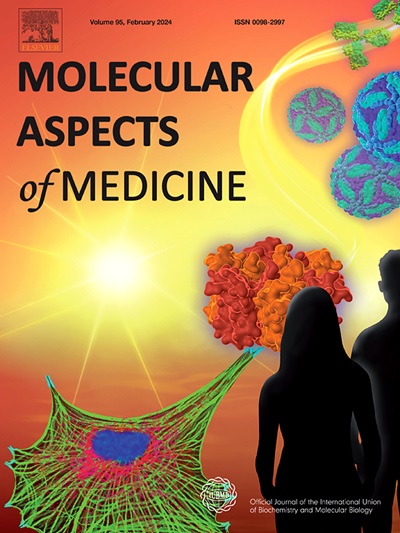Urogenital manifestations of SARS-CoV-2, MPXV and Zika virus: A comprehensive review
IF 10.3
2区 医学
Q1 BIOCHEMISTRY & MOLECULAR BIOLOGY
引用次数: 0
Abstract
The current century has been associated with the outbreaks of emerging and re-emerging viral infections such as severe acute respiratory syndrome coronavirus 2 (SARS-CoV-2), monkeypox virus (MPXV), and Zika virus (ZIKV). Although their common clinical manifestations are currently well-known, the urogenital system is gaining attention as a significant, though often underappreciated, anatomical site for emerging and re-emerging viral infections, disease development, and transmission. The present review aims to comprehensively discuss the urogenital complications linked to the infections caused by these viruses, with a primary focus on describing their suggested and established roles in the development of urogenital sequelae. It reviews various molecular and cellular mechanisms, such as direct viral pathogen cytopathic activity, virally-mediated inflammation, and the nephrotoxic side effects of specific medications, by which SARS-CoV-2, MPXV, and ZIKV may affect various parts of the urogenital system. In this context, SARS-CoV-2 uses angiotensin-converting enzyme 2 (ACE2) for cell entry, which is frequently present in the urogenital tissues, resulting in urogenital injuries. Zika virus exhibits a distinct tropism for the male reproductive tract, demonstrating prolonged viral persistence in semen that facilitates sexual transmission and is linked to testicular damage and adverse congenital outcomes. The present study also addresses diagnostic considerations and therapeutic strategies in the context of urogenital sequelae associated with these viruses. Understanding the intricate molecular basis of these viral-caused sequelae is crucial for improving differential diagnosis and introducing targeted therapeutic strategies.
SARS-CoV-2、MPXV和寨卡病毒泌尿生殖器表现综述
本世纪爆发了新出现和再出现的病毒感染,如严重急性呼吸综合征冠状病毒2 (SARS-CoV-2)、猴痘病毒(MPXV)和寨卡病毒(ZIKV)。虽然其常见的临床表现目前是众所周知的,但泌尿生殖系统作为新发和再发病毒感染、疾病发展和传播的重要解剖部位,正受到越来越多的关注,尽管经常被低估。本综述旨在全面讨论与这些病毒引起的感染相关的泌尿生殖系统并发症,主要侧重于描述它们在泌尿生殖系统后遗症发展中的建议和确定的作用。它回顾了SARS-CoV-2、MPXV和ZIKV可能影响泌尿生殖系统各个部分的各种分子和细胞机制,如直接病毒病原体细胞病变活性、病毒介导的炎症和特定药物的肾毒性副作用。在这种情况下,SARS-CoV-2利用血管紧张素转换酶2 (ACE2)进入细胞,这种酶经常存在于泌尿生殖器组织中,导致泌尿生殖器损伤。寨卡病毒在男性生殖道表现出明显的倾向,病毒在精液中长期存在,促进了性传播,并与睾丸损伤和不利的先天性后果有关。本研究还讨论了与这些病毒相关的泌尿生殖系统后遗症的诊断考虑和治疗策略。了解这些病毒引起的后遗症的复杂分子基础对于改善鉴别诊断和引入靶向治疗策略至关重要。
本文章由计算机程序翻译,如有差异,请以英文原文为准。
求助全文
约1分钟内获得全文
求助全文
来源期刊

Molecular Aspects of Medicine
医学-生化与分子生物学
CiteScore
18.20
自引率
0.00%
发文量
85
审稿时长
55 days
期刊介绍:
Molecular Aspects of Medicine is a review journal that serves as an official publication of the International Union of Biochemistry and Molecular Biology. It caters to physicians and biomedical scientists and aims to bridge the gap between these two fields. The journal encourages practicing clinical scientists to contribute by providing extended reviews on the molecular aspects of a specific medical field. These articles are written in a way that appeals to both doctors who may struggle with basic science and basic scientists who may have limited awareness of clinical practice issues. The journal covers a wide range of medical topics to showcase the molecular insights gained from basic science and highlight the challenging problems that medicine presents to the scientific community.
 求助内容:
求助内容: 应助结果提醒方式:
应助结果提醒方式:


